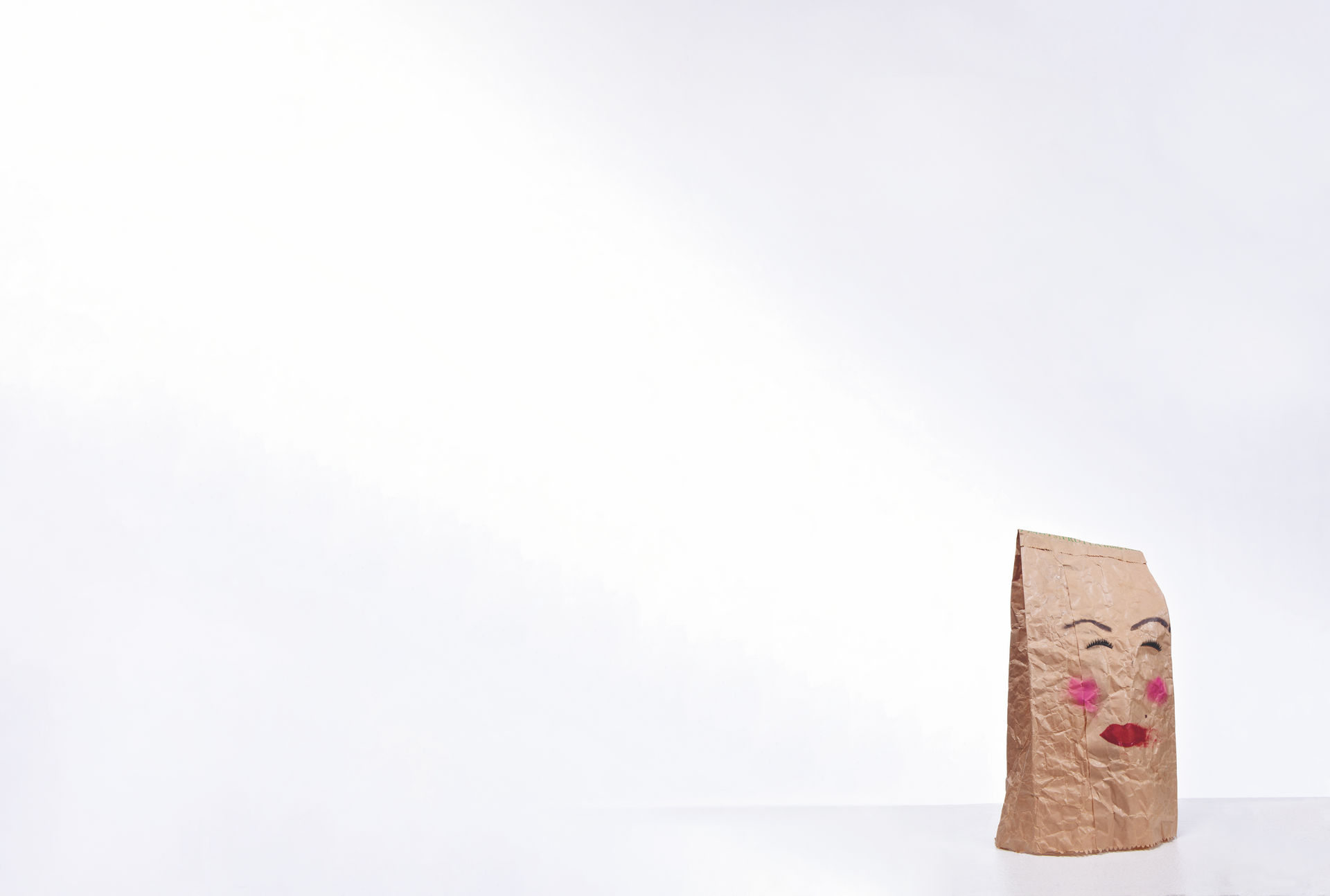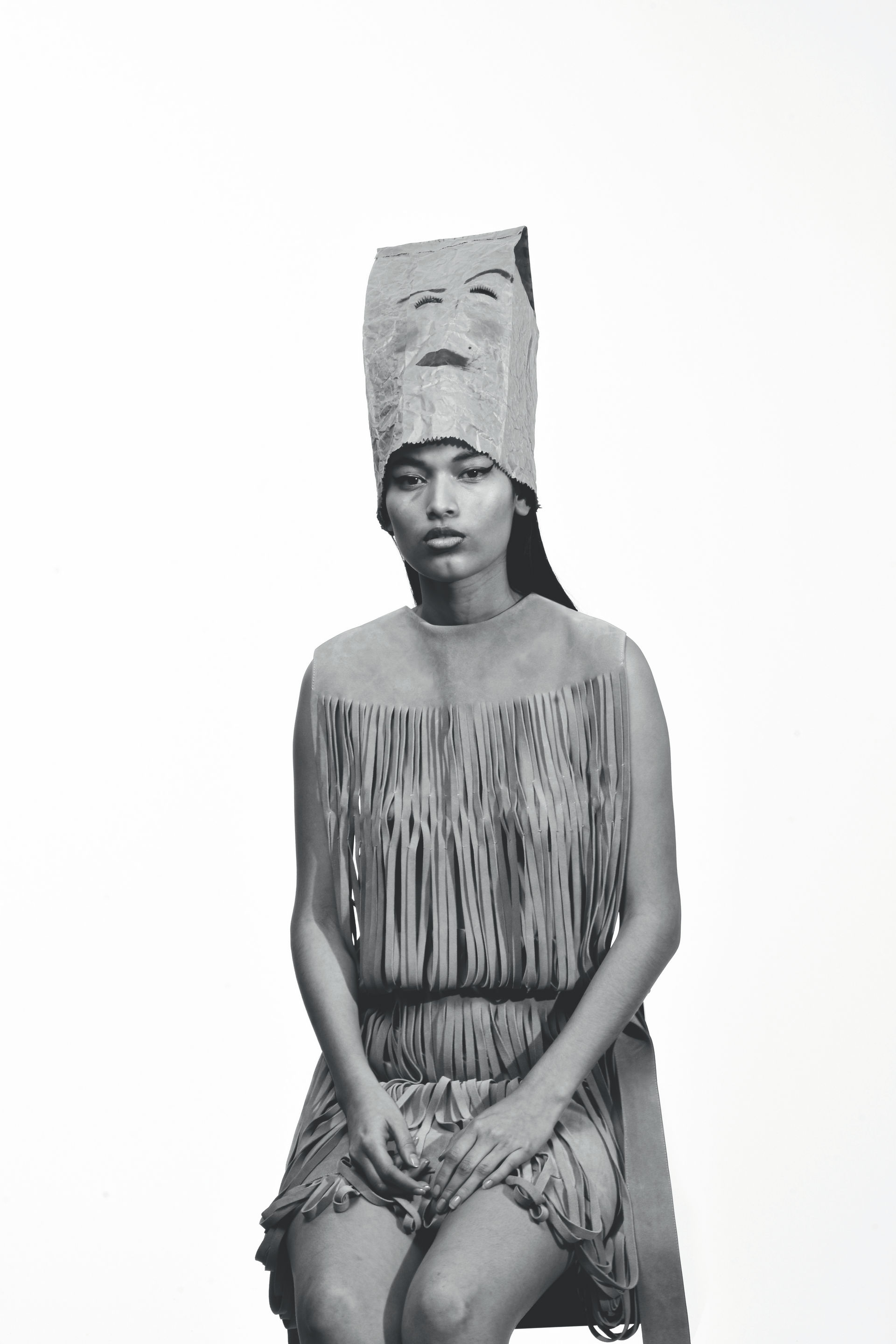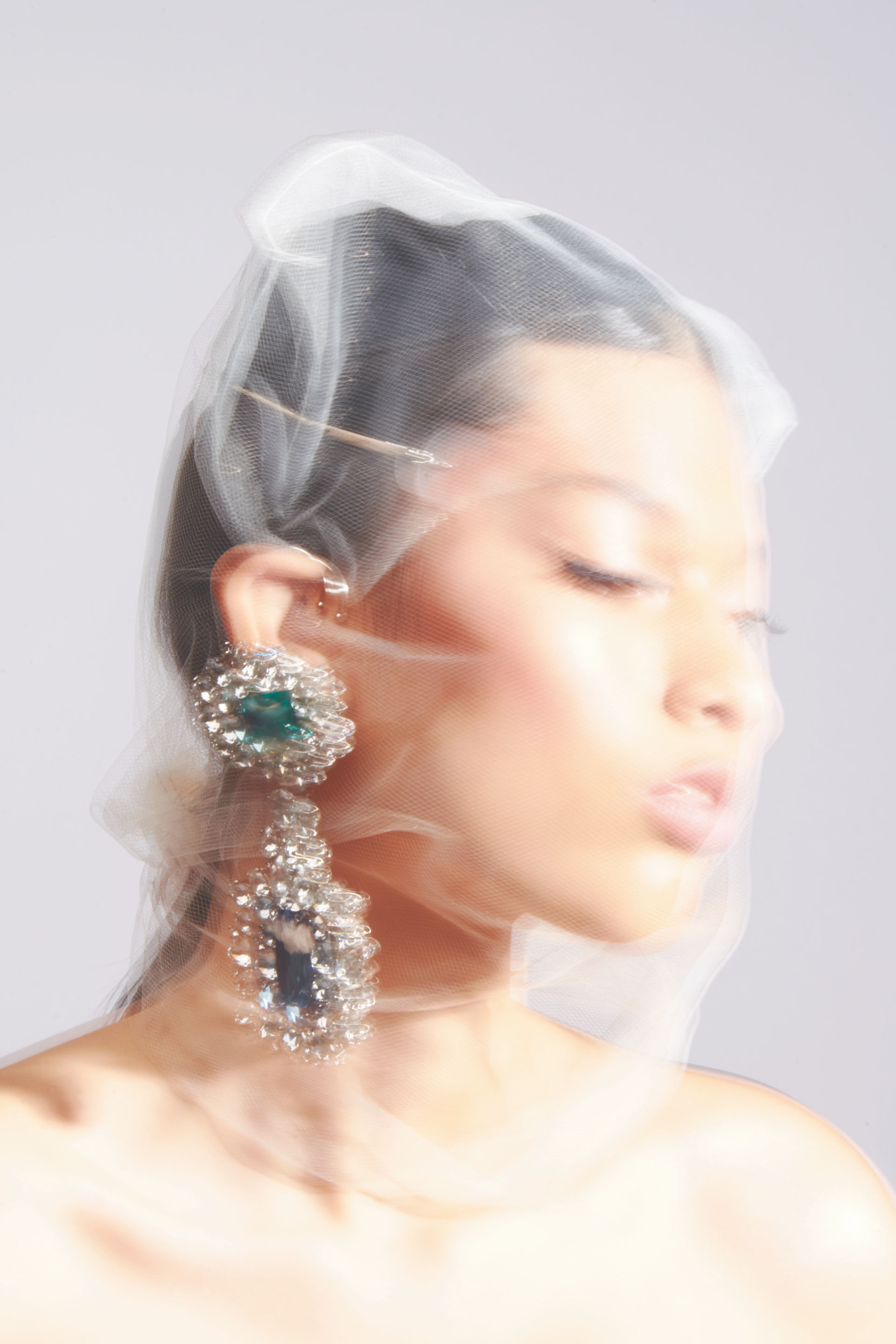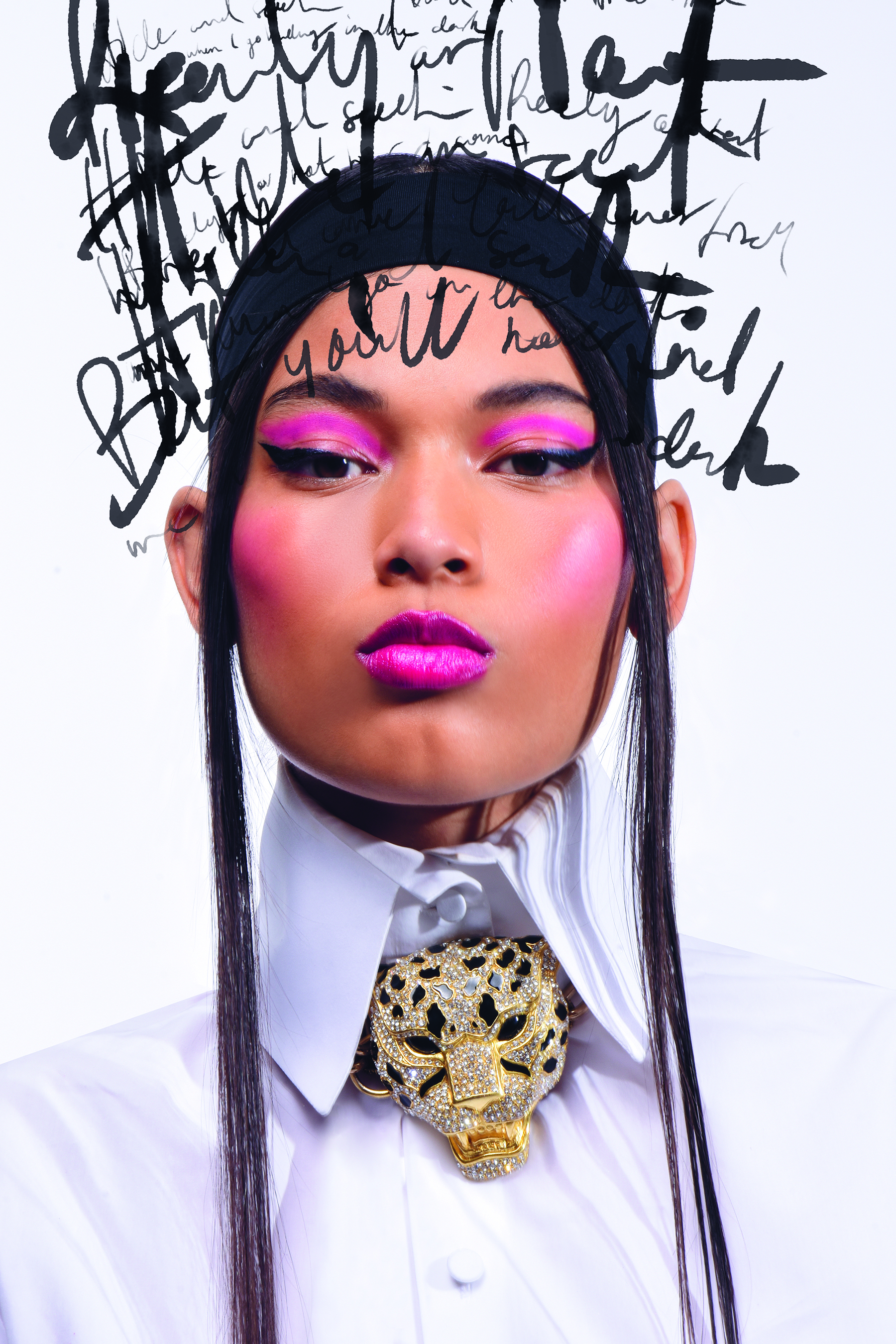
FASHION DIRECTION ANNA CASTAN HAIR GIANNANDREA MAKEUP ALISONN FETOUAKI
MODEL TATIANA TORRES / ELITE WORDS MARIELLA AGAPIOU
The luxury of being a freelancer used to mean that I could wake up, open my laptop and start working, regardless of the sculptured bird’s nest on the side of my head, or my huge puffy eyes. But then the pandemic hit, working from home became a hashtag, and the Zoom invites came piling in.
Never before had I been forced to look at my face for so many hours in a day. Personally, I reacted by joining the tribe of women who gave up on makeup entirely in the first wave of lockdowns. However, the increased visibility of our faces in our post-pandemic #WFH world meant filters came to the rescue – but did they?
“Where we used to complain about how we looked in a mirror, more people are criticising their photos instead of their reflection,” explains Dr. Melissa Doft, a New York-based plastic surgeon.
OCHER FRINGED SUEDE DRESS, SALVATORE FERRAGAMO, SHOP SIMILAR

FASHION DIRECTION ANNA CASTAN HAIR GIANNANDREA MAKEUP ALISONN FETOUAKI
MODEL TATIANA TORRES / ELITE WORDS MARIELLA AGAPIOU
Not only has social media changed the face of beauty, it’s changing the beauty we see in faces. Societal standards of beauty according to fashion editorials, television – and now filters – would have us believe that the ‘Instagram Face’ is the highest form of human allure: clear, luminous skin; high cheekbones; feline-like eyes with long lashes; a petite nose; full luscious lips; defined brows. Still
with me? The face is ethnically ambiguous, but definitely light. The problem is: presenting this way is all too easy. Features such as ‘touch up my appearance’ on Zoom can offer you a flawless complexion just in time for that big presentation. Which is why the use of editing apps such as FaceTune increased 20 percent at the beginning of the pandemic and have over one million edited
images exported daily.
As a millennial, I had to flick through magazines to feel bad about myself, constantly comparing my Cypriot curves to their lithe limbs; my lacklustre locks to their big bouncy hair; my acne-scarred face to their crystal-clear complexions. Our issues with self-esteem and comparison to elevated women in society is nothing new. HerStory tells us that ideals of female beauty, which can only be met through painful procedures, have led many to manipulate their appearance – from tiny feet in imperial China to wasp-like waists in 19th-century Europe. What’s occurring nowadays, however, is that we’re not looking to other women to see what’s wrong and what needs changing, but at idealised versions of ourselves. Pictures online created using social media filters. Images that are completely and utterly unrealistic. They call this ‘Snapchat dysphoria.’

FASHION DIRECTION ANNA CASTAN HAIR GIANNANDREA MAKEUP ALISONN FETOUAKI
MODEL TATIANA TORRES / ELITE WORDS MARIELLA AGAPIOU
“Social media started out with good intentions – to connect us and share our experiences,” explains Anita Bhagwandas, an award-winning beauty journalist whose book Ugly is coming out in August 2022. “But if you type #beauty or #selfie into any platform, what you’ll see… are plumped-up pouts, perfectly drawn-on brows and mannequin-esque faces, which have been altered to erase every hint of humanity.” The problem is people are now taking their filtered selfies to plastic surgeons and asking to be transformed into them in real life.
Even though I gave up wearing makeup – much to my mother’s dismay – I’m still partial to the sneaky swipe to the right for IG’s Paris filter when posting that selfie from two months ago to my profile. Although even the odd use of a filter can have damaging effects. Psychologists relate this to the positive reinforcements an edited image may receive – the more likes you get on that picture with the smaller nose, the more you hate said nose and its original form. It gets even more sinister when people start to apply the filters that also lighten skin tone and remove traditionally ethnic features such as big noses and smaller eyes. While you can most likely accredit this to Big Tech and its lack in diversity of thought, the damage has already been done.

FASHION DIRECTION ANNA CASTAN HAIR GIANNANDREA MAKEUP ALISONN FETOUAKI
MODEL TATIANA TORRES / ELITE WORDS MARIELLA AGAPIOU
“I’m a fairly level-headed person, but after spending a week making myself fit into the narrow social-media beauty world,” continues Bhagwandas. “I know I need to readdress who I follow for the sake of my sanity.”
All of this talk has me disappearing from social media entirely, wanting to leave no digital trace behind – perhaps comically at the exact moment everyone starts to ponder about NFTs and jumps head-first into the metaverse. I wonder how Generation Alpha will fare against the new, currently unimaginable rules of systemic oppression that come tied in a pretty bow and fed to us through our phones. One thing I do know for certain though; if I have to sit at home looking at my face all day on Zoom, you’ll have to look at it too. In all its natural, imperfect glory. Just ignore the big hat hiding the bird’s nest.
This essay was published in GRAZIA Middle East: The Journey. Discover the fashion shoot here, and the issue here.









